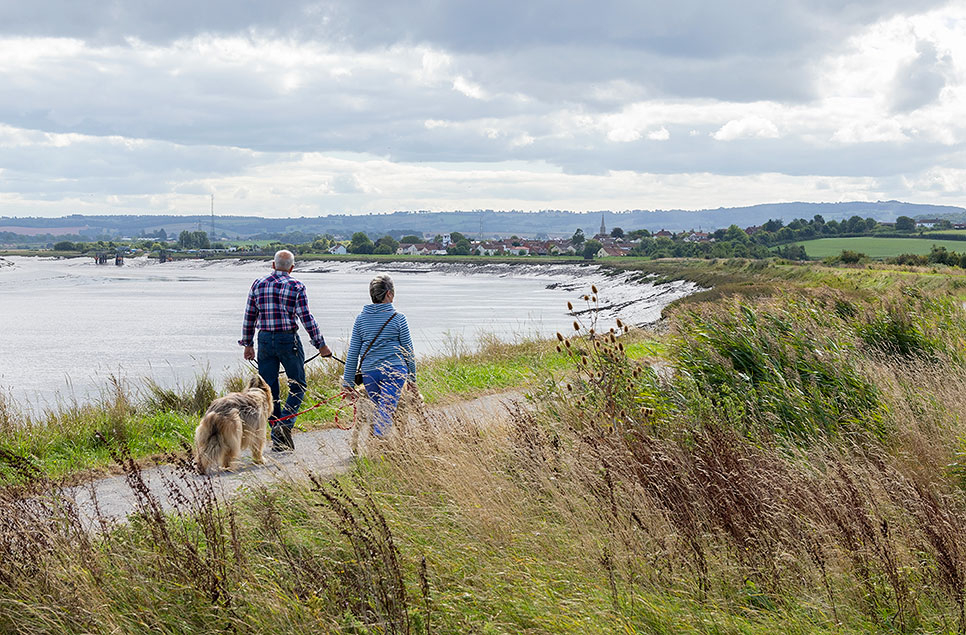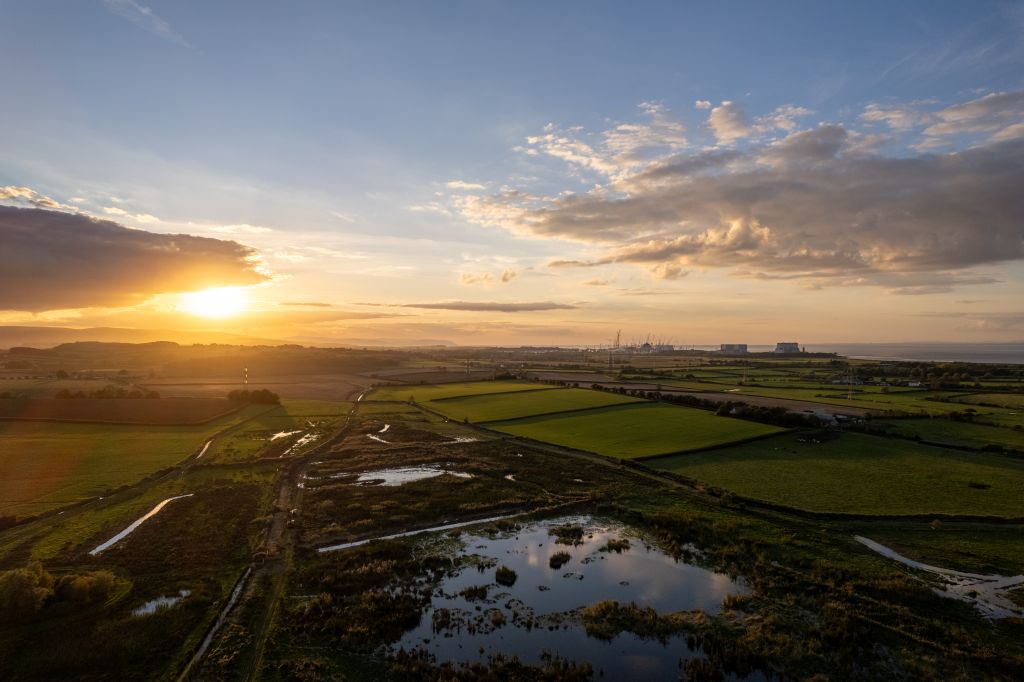WWT Steart Marshes becomes part of the new Somerset Wetlands – England’s largest ‘Super National Nature Reserve’
England’s second sNNR has been declared in Somerset by Natural England on the 70th anniversary of the creation of national nature reserves.

- The Somerset Wetlands Super National Nature Reserve (sNNR) at 6,140ha is England’s largest ‘Super-NNR’ and third largest NNR
- There are currently only two ‘Super-NNRs in England, Somerset Wetlands and Purbeck Heaths.
- WWT is a newly ‘approved body’ for Natural England which enables us to manage the newly designated Steart Marshes NNR
The Somerset Wetlands sNNR has absorbed the six reserves on the Somerset Levels and Moors and added 56% more land to the area occupied by the original NNRs. It will be managed by Natural England, Environment Agency, the Wildfowl & Wetlands Trust (WWT), National Trust, RSPB, Somerset Wildlife Trust and The Hawk and Owl Trust.
The Somerset Wetlands sNNR is 6,140ha and adds landmarks like Steart Marshes, Burrow Mump and Catcott Lows to the list of locations that already enjoyed NNR status like Shapwick Heath, Ham Wall and Bridgwater Bay.
The sNNR, meaning an extensive, clustered or archipelago NNR, will form the backbone of nature recovery in the Levels, and help partners work together to develop the area sustainably as a place where people can connect to outstanding nature.
A rich variety of habitats lie within the NNR – wet grassland, saltmarsh and intertidal mudflats which are home to many diverse species. Highlights include:
- A third of the UK’s bittern population, a large marsh bird of the heron family; avocets, black-and-white waders which bred in Somerset in 2012 for the first time in more than 150 years and new colonisers like the great white egret, which bred for the first time in Somerset and the UK ten years ago.
- 19 species of dragonflies including a ‘Merited Site of National Importance’ by the British Dragonfly Society.
- Round-leaved sundew – a carnivorous plant whose original habitat was the peatlands before drainage and farming.
NNRs are the most important places for nature in England. For the past 70 years they have been a haven for species, habitat and geology. Now they are at the heart of the growing Nature Recovery Network, too.
Dr James Robinson, WWT’s Director of Conservation said: “WWT Steart Marshes, one of the largest wetlands created in the UK, created with the Environment Agency, adds a key coastal component to the newly launched Somerset Wetlands Super National Nature Reserve. We are proud to be a vital part of the joining up of nature-rich land across the Levels to create bigger, better and more connected wetlands. This landscape-scale approach catalyses wetlands ability to help combat the causes and effects of climate change and connects more people to soothing ‘watery’ nature to improve their wellbeing.
The beautiful, shore-side wetlands at Steart not only support an incredibly rich array of wildlife, but are also a highly effective carbon sink which research shows store 10,000 tonnes of carbon each year. Steart’s new status as an Approved Body to manage an NNR recognises the site’s importance in helping to drive nature’s recovery and its innovative role as an ‘outdoor laboratory’ in helping to find solutions to today’s climate, nature and wellbeing crisis.”
Tony Juniper, chair of Natural England, said: “The creation of this very large National Nature Reserve is an important moment for nature recovery in England. This is not least because it presents a practical demonstration of what can be done by working in partnership across the landscape at scale to reverse nature’s decline. Natural England intends to encourage other projects with similar ambition.
“Seventy years from the creation of our first National Nature Reserves in England, these wonderful places are needed now more than ever, as we face the challenges of global warming, wildlife decline and reconnecting people with the natural world.”
Georgia Stokes, CEO of Somerset Wildlife Trust (SWT), said:“The Somerset Wetlands NNR represents a shift in approach and a scaling up of ambition and action in a low-lying county that’s hugely vulnerable to the impacts of climate change. By joining up land in this way, we can put a significant proportion of the county into recovery for nature and climate - from inland wetland reserves all the way to Somerset’s coast – rebuilding ecosystems and restoring the land's ability to capture and store carbon and achieve real gains for climate and biodiversity for future generations.”
Background
- NNRs are in the same “family” as National Parks and National Trails (created by the same act of Parliament).
- There are 223 NNRs in England currently, covering 97000ha/375 sq. miles.
- The current 58 Approved Bodies include NGOs, local authorities, other government bodies, private estates, and companies.
- To become an ‘approved body’ for Natural England organisations need to be able to demonstrate a track record of conservation management and an ability to manage an NNR in the long term.
- NNR Partnership Group established in 2015, created NNR Strategy in 2017, promoting the role of NNRs in nature recovery.



